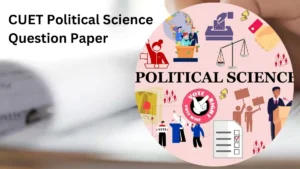Table of Contents

Ncert Solutions For Class 12 Biology Chapter 9 PDF Download
Adda 247 provides NCERT Solutions for Class 12 Biology chapter 9 NCERT solutions which is for the students who want to go ahead in life and achieve great marks in their examinations. The NCERT Solutions for class 12 are provided by the teachers who are experts of their subjects. The solutions are set according to the rules formulated by the NCERT class 12 biology and in the language that can be understood by every student. By these reading the solutions students can build up a strong base easily. The NCERT class 12 Biology solutions covers the chapters 1 to 16 with the important questions and the answers in a detailed way.
Examinations can be threatening for some people, a proper learning of the concepts is the key to crack the examination. Students rely on the solutions of the NCERT provided by Adda 247. The solutions are formulated by the experts of the subjects who have tremendous knowledge in their subjects.
These NCERT Solutions of class 12 chapter 9 help the students to get familiarized with the textbooks. The students can access the solutions anywhere while browsing the web easily. The solutions are very precise and accurate.
NCERT Solutions for Class 12 Biology Chapter 9 – Strategies for Enhancement in Food Production
The chapter provides information about Strategies for enhancement in food production. There are various different strategies for enhancement of food production which includes;
Plant tissue culture, types of tissue culture, techniques of tissue culture, application of tissue culture, plant breeding, single cell protein, animal husbandry. Plant tissue culture- Plant cells and organs can be cultured in vitro on a suitable medium. Haberlandt started the technique of plant tissue culture in 1902. Types of tissue culture- Three are two types of tissue culture, viz.
(a) Suspension Culture (b) Callus Culture. We are dependent on plants and animals for our food. With the ever-increasing demand for food and animal products, there arose the need to adopt scientific methods to enhance food production.
Animal husbandry is one of the aspects of it which will be covered in this chapter. Animal husbandry deals with the care and breeding of livestock, like buffaloes, cows, pigs, horses, cattle, sheep, camels, goats, etc. Under this, you will learn more about dairy management and poultry management, followed by apiculture and fisheries.
Apart from that, you will study plant breeding. In this discussion, single-cell protein and tissue culture will be explained. The main challenge is to increase productivity and decrease wastage due to pests, the solution to genetically modified crops.
[sso_enhancement_lead_form_manual title=”Download Full PDF of Class 12 Biology Chapter 9 ” button =”Download Now” pdf =”/jobs/wp-content/uploads/2021/07/05105049/English-chapter-9-12th.pdf”]
Features of the NCERT Solutions for Class 12 Biology Chapter 9 – Strategies for Enhancement in Food Production
NCERT Solutions for class 12 biology chapter 9 have been answered based on the important information on the question.
- The columns are used wherever necessary.
- Solutions are solved point wise and accurately answered point to point.
Important Questions of Ncert Solutions Class 12 Biology Chapter 9- Strategies for Enhancement in Food Production
Question 1. Explain in brief the role of animal husbandry in human welfare.
Answer: Animal husbandry is defined as the agricultural practice of breeding and raising livestock. Poultry such as chicken, duck, quails, etc are reared for eggs and meat. Animals such as cows and buffaloes are reared for milk. Goats are reared for milk and meat and sheep are reared for meat and wool. Animal husbandry can be carried out as a side occupation along with agriculture as it is cost effective with high-profit returns. In this way, animal husbandry has contributed to human welfare.
Question 2. If your family owned a dairy farm, what measures would you undertake to improve the quality and quantity of milk production?
Answer: Dairy farm management deals with processes which aim at improving the quality and quantity of milk production. Milk production is primarily dependent on choosing improved cattle breeds, provision of proper feed for cattle, maintaining proper shelter facilities, and regular cleaning of cattle.
Choosing improved cattle breeds is an important factor of cattle management. Hybrid cattle breeds are produced for improved productivity. Therefore, it is essential that hybrid cattle breeds should have a combination of various desirable genes such as high milk production and high resistance to diseases. Cattle should also be given healthy and nutritious food consisting of roughage, fibre concentrates, and high levels of proteins and other nutrients.
Cattle’s should be housed in proper cattle-houses and should be kept in well ventilated roofs to prevent them from harsh weather conditions such as heat, cold, and rain. Regular baths and proper brushing should be ensured to control diseases. Also, time-to-time check-ups by a veterinary doctor for symptoms of various diseases should be undertaken.
Question 3. What is meant by the term ‘breed’? What are the objectives of animal breeding?
Answer: The term ‘breed’ refers to a group of animals that are related to each other by means of descent and are similar in most of their characteristics characters like general appearance, features, size, configuration etc. Different breeds can be improved via processes of animal breeding The term animal breeding is the production of improved breeds of domesticated animals by improving their genotypes through selective mating.
Objectives of animal breeding
The process of animal breeding is carried out keeping in mind certain specific objectives as per the demand of breeders. Some of the main objectives of animals breeding are as follows:
- For improving the growth rate
- For increased production of milk, meat, egg, wool etc
- For obtaining a superior quality of milk, meat, eggs, wool etc
- For improving the resistance to various diseases
- To increase productivity as well as reproductivity
Question 4. Name the methods employed in animal breeding. According to you, which of the methods is best? Why?
Answer: Different methods of animal breeding are: inbreeding, out-breeding, out-crossing, cross-breeding and interspecific hybridisation.
Out of these methods, the best breeding method is of out-crossing because it increases the milk production and growth rate of beef cattle. Even a single outcross often helps to overcome the problem of inbreeding depression.
Question 5. What is apiculture? How is it important in our lives?
Answer: Apiculture is the rearing and breeding of honeybees for the production of honey . It is important in our live as honeybees provide honey, which is a highly nutritive substance and beeswax is used in many industries. Honeybees also pollinate flowers of some very important plants like sunflower, apple, pear.
Importance of Apiculture:
- The honey obtained from bees is used by human beings because of its food and medicinal value.
- Honey is also used in the preparation of bread, biscuits, cakes, alcoholic drinks and as fish and poultry food.
- Bee wax obtained is used in the manufacture of cosmetics, paints, face creams, ointments, insulators, polishes and for laboratory microtomy.
- It provides job opportunities.
- In addition to these, bees perform natural cross pollination which leads to an increase in yield of plant products due to hybridization. This is useful in agriculture and horticulture.
Question 6. Discuss the role of fishery in the enhancement of food production.
Answer: Fishery is an industry which deals with catching, processing, and marketing of fishes and other aquatic animals that have a high economic value. Some commercially important aquatic animals are prawns crabs, oysters, lobsters, and octopus. Fisheries play an important role in the Indian economy. This is because a large part of the Indian population is dependent on fishes as a source of food, which is both cheap and high in animal protein. A Fishery is an employment generating industry especially for people staying in the coastal areas. Both fresh water fishes (such as Catla, Rohu, etc) and marine fishes (such as tuna, mackerel pomfret, etc.) are of high economic value.
Question 7. Briefly describe various steps involved in plant breeding.
Answer: The various steps involved in plant breeding are:
- Collection of variability: It involves collection of variability of the species
- Evaluation and selection of parents: It involves selecting individual plants having the best desirable characters from the genetically mixed population. Pure lines are created consisting of individuals which are all homozygous with negligible phenotypic variations. The selected plants are used in hybridization.
- Hybridization: It is one of the most important methods of plant breeding. It involves producing new varieties of crops with desirable combination of characters by crossing two or more parents having unlike genetic constitution.
For example, suppose a variety of rice has a high yield and good quality but has poor disease resistance capacity. There is another variety of rice which maybe poor in yield and quality but has high disease resistance. It is the objective of hybridization to create a progeny such that the good traits be incorporated into one progeny and the hybrid thus formed shows the desired combination of good traits (e.g. good quality, high yield and higher disease resistance power) which is then multiplied for commercial use. - Selection and testing of recombinants: Plants having desirable characteristics are selected at every generation
- Testing, release and commercialization: Evaluation of the newly selected lines is carried out in terms of the yield (both qualitatively and quantitatively), disease resistance and other agronomic traits. This is followed by testing in the fields and its comparison with the local crop is done after which it is allowed to be released.
Question 8. Explain what biofortification is?
Answer: Biofortification is the idea of breeding crops to increase their nutritional value. This can be done either through conventional selective breeding or through genetic engineering. Increasing nutritional requirements of growing population has increased the need for biofortification.
Question 9. Which part of the plant is best suited for making virus-free plants and why?
Answer: Apical and axillary meristem of plant is free from virus. Thus, we can remove the meristem and grow it in vitro to obtain virus-free plants. Meristems of banana, sugarcane, potato have been cultured to produce virus-free plants.
Question 10. What is the major advantage of producing plants through micropropagation?
Answer: Micro propagation: It is the practice of rapidly multiplying stock plant material to produce a large number of progeny plants, using modern plant tissue culture methods. Advantage of micro propagation are following: (i) The main advantage of micropropagation is the production of many plants that are clones of each other. (ii) Micro propagation can be used to produce disease free plants. (iii) It is the only viable method of regenerating genetically modified cells or cells after protoplast fusion.
FAQs on NCERT Solutions for Class 12 Biology Chapter 9
What are the advantages of referring NCERT Solutions for class 12 Biology chapter 9?
Students referring the ncert solutions for class 11 biology chapter 9 pdf download by Adda 247 find the solutions helpful during the exams. The solutions are prepared by the experts in an interactive manner keeping in mind the students. The students’ perspective is kept in mind while preparing the solutions. It helps in completing the syllabus on time and also provides notes for the revision prior to the exam.
What are the advantages of referring NCERT in competitive exams like JEE and AIPMT?
Most of the competitive exams like NEET, JEE etc. follow the basic NCERT books for designing their question papers. NCERT serves as the base for every book prepared for NEET and JEE. The competitive exams are based on the CBSE syllabus applied in XI and XII classes and NCERT books strictly follow CBSE syllabus. In addition to this, NCERT books play an important role in clearing out the theoretical concepts. Every topic given in NCERT books is explained in such a way to help students make their basics and fundamentals strong and clear.
How To Use NCERT Solutions For Class 12 Biology?
- i) Study the chapter topic wise and understand the various concepts.
- ii) First, try to solve the questions by yourself and then look at the solutions.
iii) Use them as a reference guide while revising the chapter.
- iv) If you get stuck at any question, you can check the step by step solution from the PDF from ncert solutions for class 11 biology chapter 9 pdf download by Adda 247.
.
Is it mandatory to solve all the NCERT questions mentioned at the end of each chapter?
The questions and answers mentioned in NCERT textbooks at the end of each chapter are quite important not only for examination but also for understanding the concepts in a better way. These questions aim to test the students’ understanding and learning over the topics that they have learned in the chapter.
Solving the NCERT exercise problems will help to
- clear all the concepts and formulae you learned in a chapter
- get comfortable with different types of questions that might be asked in exams
- get enough practice which is key to succeed in Mathematics exam
- improve your accuracy and speed
What are the important concepts covered in the Chapter 9 of NCERT Solutions for Class 12 Biology?
The concepts involved in the chapter 9 of NCERT Solutions are –
9.1 – Role of Animal husbandry in human welfare
9.2 – Dairy Farm Management
9.3 – Poultry Farm Management
9.4 – Apiculture
9.5 – Plant breeding
9.6 – Single Cell Protein (SCP)
9.7 – Tissue Culture
These concepts are created by the faculty at Adda 247. The solutions are available at Adda 247 in the PDF format which can be downloaded by the students.



 CUET Political Science Question Paper 20...
CUET Political Science Question Paper 20...
 CUET Business Studies Syllabus 2025, Do...
CUET Business Studies Syllabus 2025, Do...
 CUET Commerce Syllabus 2025: Major Chang...
CUET Commerce Syllabus 2025: Major Chang...








